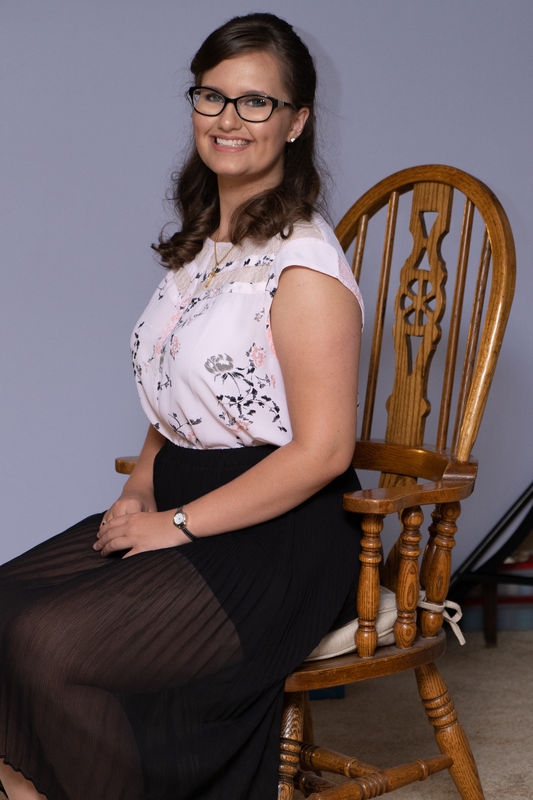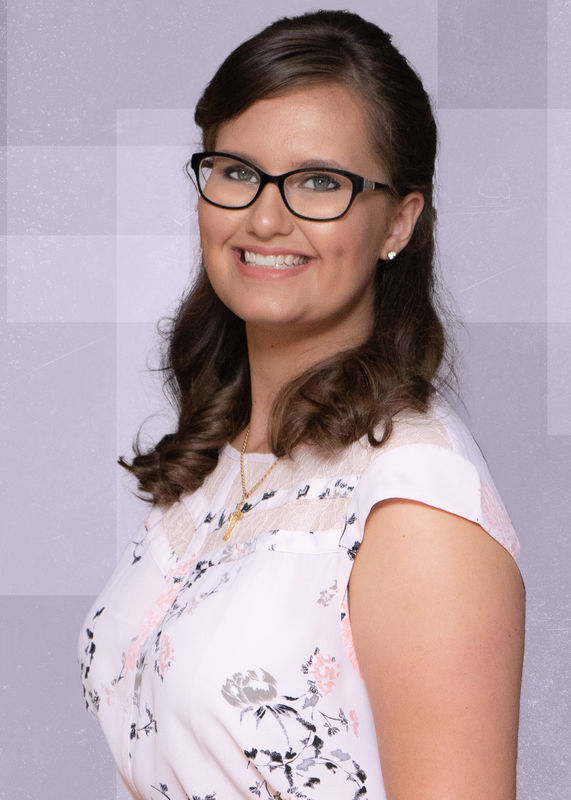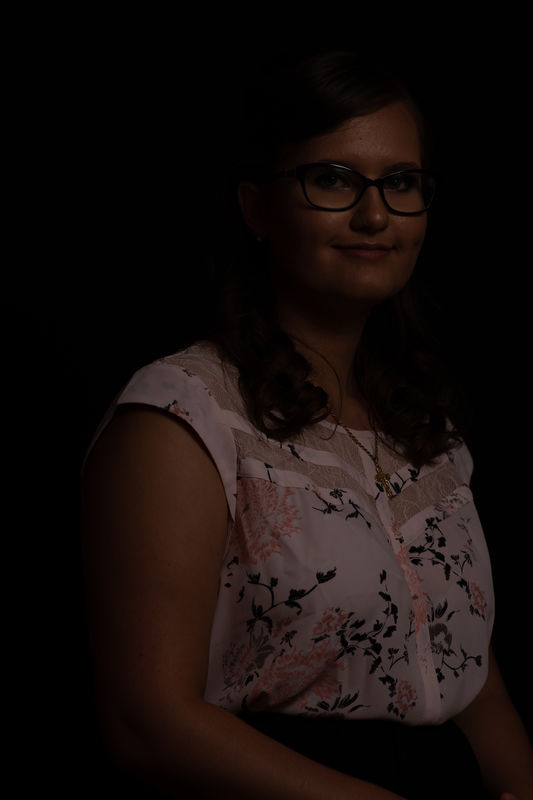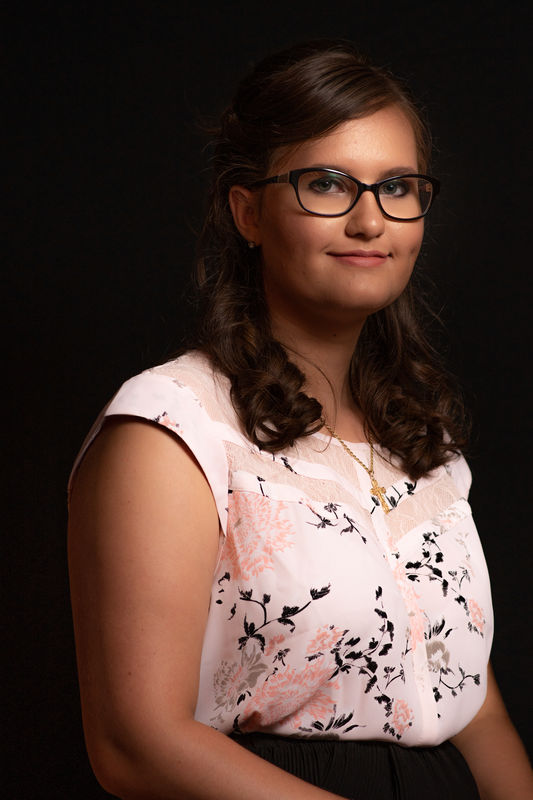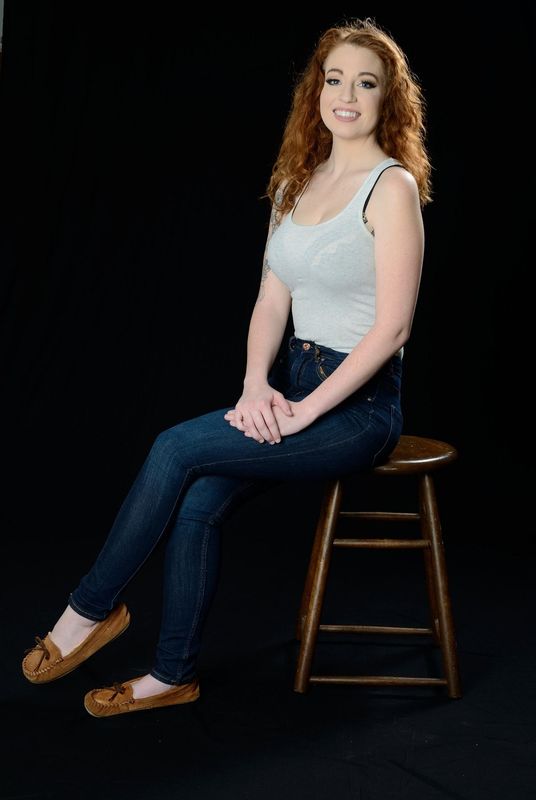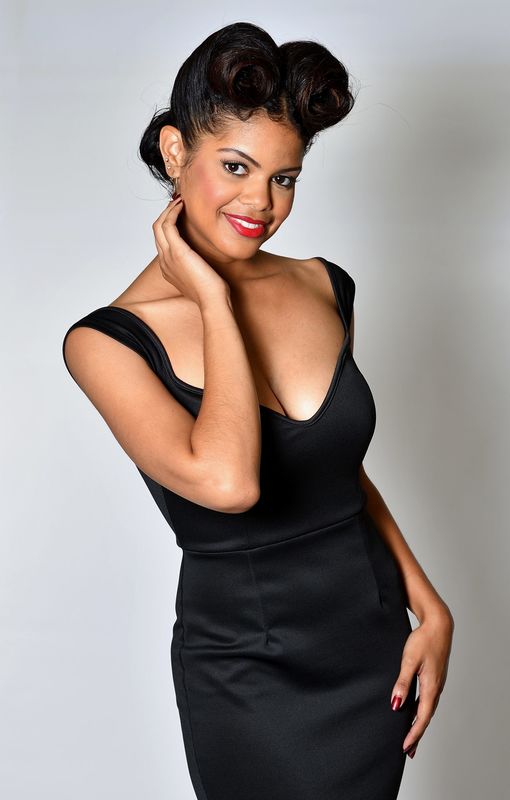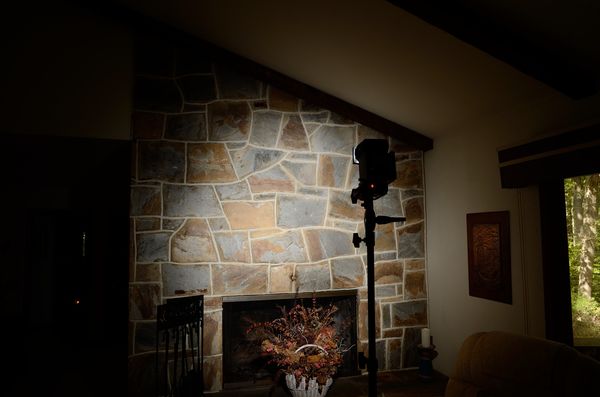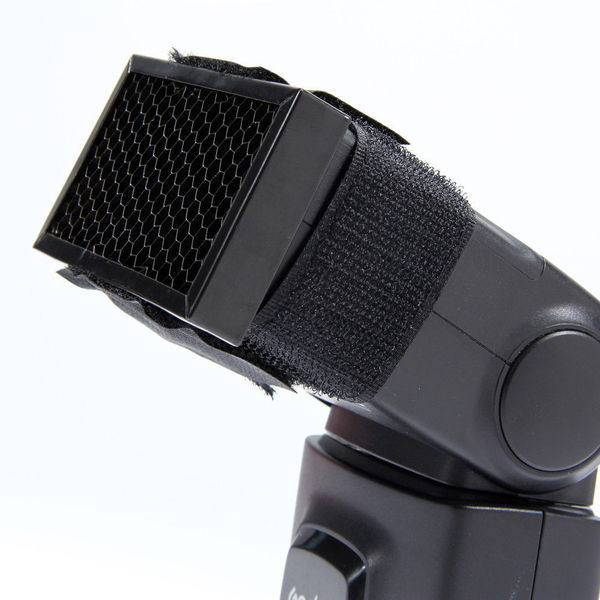Speedlight failure
Sep 7, 2018 04:28:25 #
I have been using speedlights and umbrellas for portraits, which is fine for daytime. However, at night, I notice that the pupils are large because the light is not on all the time and the ambient light isn't enough to shrink the pupils. Also, I don't always get a catchlight. I thought about selling my SB900 and buying the SB5000; but I don't think that would solve my problem. I already have the SU800 commander and the WR10 on my Nikon D500; but if I switch to a monolight strobe, I would need a different remote to use with it. I was thinking about moving up to strobe lighting with a modeling light. Which brand is best? There's Elinchrom, Godox, ProPhoto...what power...250, 500? I would like battery powered that works with a remote or radio trigger like Pocket wizard; but not all have the remote for Nikon.
The Profoto A1 looks interesting; but would it be powerful enough? There's also the B1X for $2095 or the D1 Air 250 for $1112; but would that work with their new Nikon remote for $419? I also looked at the Elinchrom BRX250 for $590 ($100 more for the BRX 500).
I came to this conclusion after shooting my granddaughter's senior pictures. For this shoot, I purchased a Westcott 43" Apollo Orb Speedlight kit to get softer light. I used a D500 with a Sigma 50-100 for the first batch of pictures and a SU800 Commander on the hot shoe of the camera. Everything worked great on the practice shots of my husband during the day. By the time my granddaughter got to the house, it was dark out and soon after we started shooting, the speedlights stopped working. I changed the batteries and they weren't hot; but, they still wouldn't fire. I had them set for manual on the commander. Even though the Softbox came as a speedlight kit, I think I could use a strobe in it instead.
I have included a couple of pictures from my granddaughter's senior picture shoot to illustrate and for your expert opinion on improvement for the next time. I will be doing the school pictures for the younger grandkids soon and any advice will help.
The first set, I gave up on the lights, and switched to the Sony a7ii with 24-70/4 and flash pointing at the ceiling. I'm posting a SOOC and an after PP. The second set, I used the 85/1.8 lens and there was no light!
The Profoto A1 looks interesting; but would it be powerful enough? There's also the B1X for $2095 or the D1 Air 250 for $1112; but would that work with their new Nikon remote for $419? I also looked at the Elinchrom BRX250 for $590 ($100 more for the BRX 500).
I came to this conclusion after shooting my granddaughter's senior pictures. For this shoot, I purchased a Westcott 43" Apollo Orb Speedlight kit to get softer light. I used a D500 with a Sigma 50-100 for the first batch of pictures and a SU800 Commander on the hot shoe of the camera. Everything worked great on the practice shots of my husband during the day. By the time my granddaughter got to the house, it was dark out and soon after we started shooting, the speedlights stopped working. I changed the batteries and they weren't hot; but, they still wouldn't fire. I had them set for manual on the commander. Even though the Softbox came as a speedlight kit, I think I could use a strobe in it instead.
I have included a couple of pictures from my granddaughter's senior picture shoot to illustrate and for your expert opinion on improvement for the next time. I will be doing the school pictures for the younger grandkids soon and any advice will help.
The first set, I gave up on the lights, and switched to the Sony a7ii with 24-70/4 and flash pointing at the ceiling. I'm posting a SOOC and an after PP. The second set, I used the 85/1.8 lens and there was no light!
Sep 7, 2018 06:13:05 #
I've never used a strobe that supports TTL metering as the Profoto strobes have. I'm sure it works great. I went with Paul C. Buff DigiBee DB800 strobes for $350 each. It has a very powerful 400W equivalent LED modeling light. The modeling lamp output level can be adjusted manually or linked to the strobe output level. The DB400 is $310. I use a Sekonic L-478DR incident light meter with a built-in PocketWizard module to take light readings. It's displays the percentages of ambient and strobe light that make up the total exposure. P.C.B. makes a wide variety of light modifiers for their strobes. I've purchased their 22" white beauty dish, a 10x36 strip softbox with grid, an 8.5" reflector with 30 deg. grid, and their umbrella reflector. Sometimes, I set up one of the strobes as a hair light or use the strip softbox to feather light.
Sep 7, 2018 10:41:43 #
CO wrote:
I've never used a strobe that supports TTL meterin... (show quote)
Thank you for that. That’s a reasonable price for lights, too. Do you use a modifier for the hair light?
Sep 7, 2018 16:50:18 #
GrandmaG wrote:
Thank you for that. ThatâÂÂs a reasonable price for lights, too. Do you use a modifier for the hair light?
Yes, I used a 22" beauty dish for a hair light in the photo below. The beauty dish comes with a direct light blocker disc and a diffuser sock. I also have an 8.5 inch reflector with a 30 degree grid that I use as a hair light and a rim light. A 15 degree grid is also available.
A beauty dish is great to have because it accentuates features a little more. I took the second photo with the beauty dish as the main light. The light from the beauty dish has more contrast than the light from larger modifiers.
I got this Flashpoint ballhead telescoping reflector holder from Adorama. The ball head design lets you position the reflector in all sorts of different positions and quickly lock it down.
https://www.amazon.com/Adorama-Flashpoint-Ballhead-Telescoping-Reflector/dp/B00NSA44JM
Sep 7, 2018 17:17:05 #
I'm not trying to hijack this thread it's just that something else came to mind. You stated that you already have a speedlight. You can use that as a hair light and use a strobe for the main light. I've done it a few times using three different PocketWizard radio triggers. I had a PocketWizard Mini-TT1 on my camera, my Nikon SB-700 flash on a PocketWizard Flex-TT5, and a PocketWizard Plus III or Plus X connected to my strobes. The Mini-TT1 and Flex-TT5 transmit both the PocketWizard standard and controlTL channels simultaneously. The Mini-TT1 on my camera triggered the SB-700 and my strobe simultaneously.
The nice thing about the radio triggers that support TTL metering is that you can adjust flash compensation at the camera and that will be transmitted to the other radio subsequently altering the flash output level.
You could get a honeycomb grid for your speedlight. I have one made by Hubble on the SB-700 in this photo.
The nice thing about the radio triggers that support TTL metering is that you can adjust flash compensation at the camera and that will be transmitted to the other radio subsequently altering the flash output level.
You could get a honeycomb grid for your speedlight. I have one made by Hubble on the SB-700 in this photo.
Sep 7, 2018 22:16:50 #
Fine portraiture can be accomplished with electronic flash. For advanced, professional and finer portraiture, frankly, units with modeling lights are essential. You must be able to see exactly what effect your lighting has on the subjects face in terms creating an appropriate lighting pattern and style to accommodate the subject's facial and body structure, control lighting ratio and place accent lights, kickers and/or hair lights exactly where they shoud be. You can get away with speedlights, to a certain degree, if you are very familiar with all of the above mentioned adjustments and can work by instinct and guesswork. Finite adjustments like feathering require that you see exactly what you are doing.
Of course, if you shoot with flash, withou modeling lamps, you can end up with the subject seemingly having dilated pupils. Modeling lamps also help you acheive exact focus and aids in composition.
As for appearance of the eyes- larger light sources like umbrellas, soft boxes and beauty dishes will result in larger catch-lights that can, in some r cases, obscure the pules or cause distracting or undesirable "shapes" in the eyes. Sometimes, very large ligh sources can be problematic in controlling reflections in eyeglasses. Parabolic reflectors and spot lights provide smaller and seemingly sharper catch-lights, however, theses smaller sources require more precise lighting placement.
There is a misconception about a high power output of electronic flash units and systems for portraiture. It's alright to have powerful units, provide that they can be powered down sufficiently to proved larger apertures and the resulting shallow depth of field for background control. Oftentimes, I set my studio lights at 25 at watt/seconds. If you are using umbrellas, a 100 or 200 W/S output can still proved an aperture of f/8 at ISO 100 or 200. If you don't need the power for other kinds of work there are many lower priced units that will do the job. Some of the Paul C. Buff units are in hard daily use in studios and are quite durable. Another time-honored brands is Photogenic. You may also want to consider some professional units on the used market. There are some older models made by Photogenic and Norman with 3 or 4 lamp heads with modeling lamps operating from one power pack.
The simplest systems are best- the have less breakdown potential, good longevity and once mastered, you can concentrate an posing, composition and expression without fumbling with too much gear. Portrait lighing is not mere "illumination" and providing a sufficient volume of ligh for exposure- it has to do with light and shadow and careful placement of the lights in relation to the subject and camera positions.
Portraiture does not require TTL or automatic exposure features. A bit of testing shoud proved the basic exposure for a home or location "studio" setup in that you are not shooting in varying and uncontrollable environments.
You can produce surprisingly excellent portrait with as little as one mono-ligh equipped with a soft-box and a flat "silver" reflector as fill. If you have the budget, a 3 light system can yield great results- the the success is in lighting savvy.
Of course, if you shoot with flash, withou modeling lamps, you can end up with the subject seemingly having dilated pupils. Modeling lamps also help you acheive exact focus and aids in composition.
As for appearance of the eyes- larger light sources like umbrellas, soft boxes and beauty dishes will result in larger catch-lights that can, in some r cases, obscure the pules or cause distracting or undesirable "shapes" in the eyes. Sometimes, very large ligh sources can be problematic in controlling reflections in eyeglasses. Parabolic reflectors and spot lights provide smaller and seemingly sharper catch-lights, however, theses smaller sources require more precise lighting placement.
There is a misconception about a high power output of electronic flash units and systems for portraiture. It's alright to have powerful units, provide that they can be powered down sufficiently to proved larger apertures and the resulting shallow depth of field for background control. Oftentimes, I set my studio lights at 25 at watt/seconds. If you are using umbrellas, a 100 or 200 W/S output can still proved an aperture of f/8 at ISO 100 or 200. If you don't need the power for other kinds of work there are many lower priced units that will do the job. Some of the Paul C. Buff units are in hard daily use in studios and are quite durable. Another time-honored brands is Photogenic. You may also want to consider some professional units on the used market. There are some older models made by Photogenic and Norman with 3 or 4 lamp heads with modeling lamps operating from one power pack.
The simplest systems are best- the have less breakdown potential, good longevity and once mastered, you can concentrate an posing, composition and expression without fumbling with too much gear. Portrait lighing is not mere "illumination" and providing a sufficient volume of ligh for exposure- it has to do with light and shadow and careful placement of the lights in relation to the subject and camera positions.
Portraiture does not require TTL or automatic exposure features. A bit of testing shoud proved the basic exposure for a home or location "studio" setup in that you are not shooting in varying and uncontrollable environments.
You can produce surprisingly excellent portrait with as little as one mono-ligh equipped with a soft-box and a flat "silver" reflector as fill. If you have the budget, a 3 light system can yield great results- the the success is in lighting savvy.
Sep 8, 2018 02:37:07 #
CO wrote:
I'm not trying to hijack this thread it's just tha... (show quote)
Wow, that's a lot of pocket wizards! I'll be replacing my speed lights with monolights. I may use one to change the color of the background. Thank you for your advice!
Sep 8, 2018 02:50:01 #
E.L.. Shapiro wrote:
Fine portraiture can be accomplished with electron... (show quote)
This is excellent advice and I very much appreciate your response. This is exactly the kind of information I need. I will be buying at least two lights, maybe a smaller modifier or beauty dish and a better light stand with a turtle base. I will probably sell one or two of my speedlights. You mentioned that high wattage lights may not be all that good. Is 400 W enough? Also you said smaller modifiers might be better. My 43" soft box may be too large then. I also have a 43" and a 45" umbrella. I definitely had a problem keeping the reflections off my granddaughter's glasses; but, I didn't associate it with the large modifier. I was more concerned with the large pupils, no catchlights, and not being able to see the light.
Sep 8, 2018 08:52:15 #
The Paul C. Buff DigiBee DB800 strobes I have are rated at 320W/s. That provides plenty of power. The DB400 is rated at 160W/s. I've used the DB400 at studio shoots but it's often been at 100% power and barely provided sufficient light. I spent the extra $40 to get a DB800.
If you get a Paul C. Buff strobe and you are using your umbrellas, purchase their 7UR umbrella reflector. It has a 180 degree spread of light and will fill the umbrella with light all the way the edges. The standard 7" reflectors have a tighter beam of light and will often illuminate the center portion of the umbrella and leave the outer portions of the umbrella darker.
P.C.B. makes two beauty dishes. The 22" white model has a 130 degree spread of light. The 22" silver model has a 45 degree spread of light. That changes when the diffuser sock is used.
If you get a Paul C. Buff strobe and you are using your umbrellas, purchase their 7UR umbrella reflector. It has a 180 degree spread of light and will fill the umbrella with light all the way the edges. The standard 7" reflectors have a tighter beam of light and will often illuminate the center portion of the umbrella and leave the outer portions of the umbrella darker.
P.C.B. makes two beauty dishes. The 22" white model has a 130 degree spread of light. The 22" silver model has a 45 degree spread of light. That changes when the diffuser sock is used.
Sep 8, 2018 08:59:57 #
If you are looking for top of the line and have the money, I suggest Profoto, however: for dependability and starting out I would check out the Alien Bee or Digi Bee line. I have used them for some time and have the 800 and 1600.s They have been successful for the last 10 years. I have had the high end of lighting and now the lower end, I shoot product, portraits and weddings, the Paul Buff had done the job. I have used several systems in my 28 years of shooting and have tried the most expensive and the least, yes there are some differences but I believe you would be happy getting started with Paul Buff lights. Also take a look at the Einstein by the same company if you feel you need to spend more money. Good luck
Sep 8, 2018 09:20:54 #
GrandmaG wrote:
This is excellent advice and I very much appreciat... (show quote)
OK- Continued!
400 w/s in good enough, again, provided you can power down the unit when required. One popular method among portrait photographer is "Ceiling Bounce Fill"- In a room with white or -ff-white walls and ceilings you bounce on of your lights off the area where the wall meets the ceiling in back of the camera. at a high setting, this will provide an all-over fill ligh. I large white umbrella can work as well- fairly high and at zero degrees, right on the camera/subject axis. You establish an f/stop (say for example f/5.6). Your main ligh with a smaller umbrella or a soft box (24" maximum) makes for a good mail light. If that light is operating at f/8. f/11 or f/16 you have various rations of 1:2 to 1:3 or more. If you want less depth of filed you reduce all of the lights accordingly.
EYEGLASSES: Depending on the prescription and the shape of he lenses, sometimes you can just raise the ligh slightly or tip the glasses very slightly downward and avoid reflections and still ligh the eyes sufficiently- the latter works only in a full-face shot where you don't see the temples of the frames. My favorite method, with glasses, is to either remove the lenses form the frames or borrow a similar frame for your optometrist or optician. This way, you can place the lights wherever you need to and not worry about reflections, magnification or de-magnifications of the eyes or tints etc. The subject look perfectly natural with their glasses in place.
Don't sell your speedlights- you can use them, in conjunction with your mono-lights where you don't need precise placement- such as background lights. You can place 2 of them in you ceiling bounce set up- it is a fixed light and once you set it up, you don't need to readjust it and you won't require a modeling light. Then you have 2 free mono-lights- one as a main and the othere as a kicker.
The ceiling fill or fixed umbrella bounce system has many advantages. You only have you main light's to adjust, The fill ligh is out of the way and gives you more floor space. It is high enough not to reflect in eyeglasses but it will still provide fill for the orbital areas of the face.
A simple flash exposure meter is a good investment to assist in setting up exposures and ratios but testing is still necessary to fine tune your system. There is an element called unseen secondary light, especially present with flash usage. It is the extraneous light bouncing around the room and adds to the volume of fill illumination. additional fill light. level. Testing will determine the exact ratios including the additional fill. .
In a studio-like situation you only need one radio trigger to synch with the lighting system. Most mono light have built in old-fashioned photoelectric slave cells that will react to your main radio triggered light. If your lights don't have build in slave cells, they are obtainable at reasonable prices- much less than radios. Pocket Wizards are great bu t the are especially noted for operating at great distances. less expensive radios systems are available- you lights are only a few feet away from the camer and each other. A colleague of mine has the Buff radio slaves and uses them for sports coverage- they work very reliability.
Make certain that your light stands are tall enough and stable- I like the Monfrotto models that extend to 13 feet in height. They have wide tripod type bases and good casters. If space is an issue, however, heavier stand with a smaller based might be better. A hair light requires a boom stand.
I m off to a job now- I will post few basic diagrams tomorrow.
Sep 9, 2018 20:42:40 #
Basic setup.
Main light can be placed anywhere from 0° to 135° depending on the pose, subject position and desired effect.
Kicker usage is optional.
A background light cam be added if required.
Main light can be placed anywhere from 0° to 135° depending on the pose, subject position and desired effect.
Kicker usage is optional.
A background light cam be added if required.
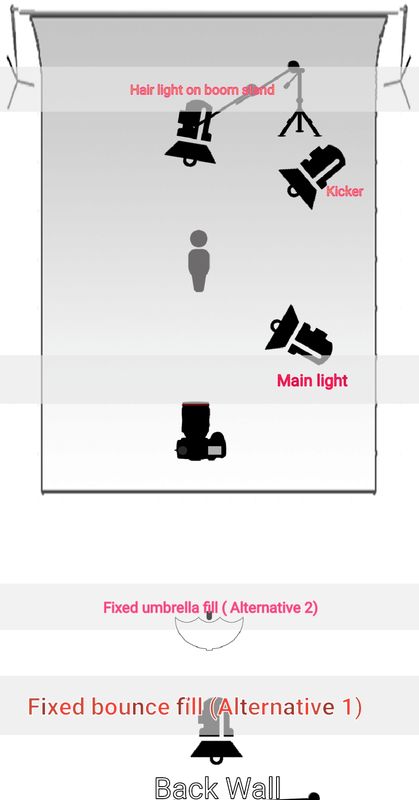
Sep 10, 2018 16:05:24 #
ronz wrote:
If you are looking for top of the line and have th... (show quote)
Is the only difference between the DigiBee and AlienBee the size, due to the modeling light? I looked at the chart on their webpage.You said "if I want to spend more money" get the Einstein. That sounds like the extra $$ doesn't buy a better light.
Sep 10, 2018 16:20:06 #
GrandmaG wrote:
Is the only difference between the DigiBee and AlienBee the size, due to the modeling light? I looked at the chart on their webpage.You said "if I want to spend more money" get the Einstein. That sounds like the extra $$ doesn't buy a better light.
Grandma!
Read into my post and analyze the features that you need based on what you are going to do.
Remember- don't pay for features that you don't need.
Sep 10, 2018 16:28:23 #
If you want to reply, then register here. Registration is free and your account is created instantly, so you can post right away.

